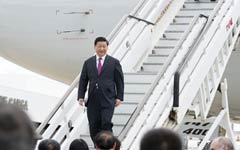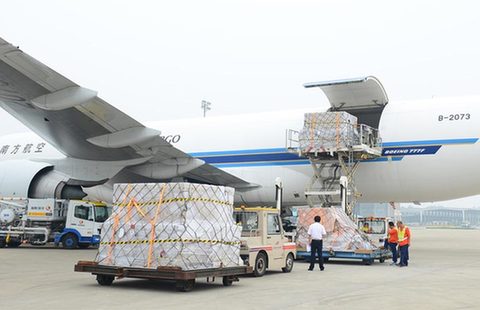Latin America set to play bigger role for Chinese firms
By Mu Chen (China Daily) Updated: 2014-09-12 07:24Agriculture, telecommunications and tourism will continue to be the key investment areas for Chinese companies in Latin America and play a big role in boosting China's ties with the region, leading industry experts said on Thursday.
Speaking at the sixth Latin America China Investment Forum organized by the Inter-American Development Bank in Beijing, Hans Schulz, vice-president of private sector and non-sovereign guaranteed operations at IDB, said China has stepped up the pace of its engagements, particularly in trade, resources procurement and asset diversification, during the past five years.
"The deep engagements are based on the profound belief that there exists a win-win situation with Latin America and the Caribbean. Though the engagements offer rich natural resources, they also provide a mature market with a growing middle-class population that can play a major role in the world economy," Schulz said.

|
 |
Most of the opportunities that come about are a result of the complementary development of the two economies - especially the emergence of the middle classes, Schulz said.
Bernardo Guillamon, manager of the office of outreach and partnership at IDB, said food consumption in China is going to triple by 2030, and according to IDB estimates, Latin America would have a 66 percent food surplus by 2025.
"We see huge opportunities for Latin American companies to partner with Chinese companies in order to feed the growing Chinese middle class," Guillamon said.
The rapid growth of the middle - class population in China will also provide huge growth opportunities in the tourism sector, as Latin America accounts for just 0.4 percent of the Chinese outbound tourist traffic.
"The rise in Chinese tourism is dramatic, and with that there is huge opportunity for investment in tourism-related infrastructure and construction," said Guillamon.
China's strong telecommunications and Internet sector and Latin America's desire for connectivity is another area of opportunity. IDB estimates that despite low broadband coverage across the region, Latin Americans already use social networking sites twice as much as the global average.
Despite great opportunities, Chen Taotao, director of the Center for China and Latin America Management Studies at Tsinghua University, said there is a reason why Chinese investment in Latin America accounts for less than 10 percent of its total foreign investment.
"In terms of investing abroad, the biggest obstacle is the differences between the home country and the host country, which are huge between China and Latin American countries in terms of culture, administration and geography," Chen said. "In this respect, there is still a lot of work to do."
Schulz said that since failure is not an option, strong partnerships will be the key. "The more Chinese companies partner with Latin American companies, the more we can bridge this understanding gap and the more we can build a mutually beneficial relationship," he said.
- China's property investment cools in August
- Alibaba roadshow bodes well for record-breaking IPO
- China Jan-Aug fixed asset investment rises 16.5%
- Britain to include China's RMB as foreign currency reserve
- China's retail sales up 11.9% in August
- China's industrial production slows in August
- China, Turkmenistan to deepen energy co-op
- The 10th Nanjing Software Expo kicks off
















